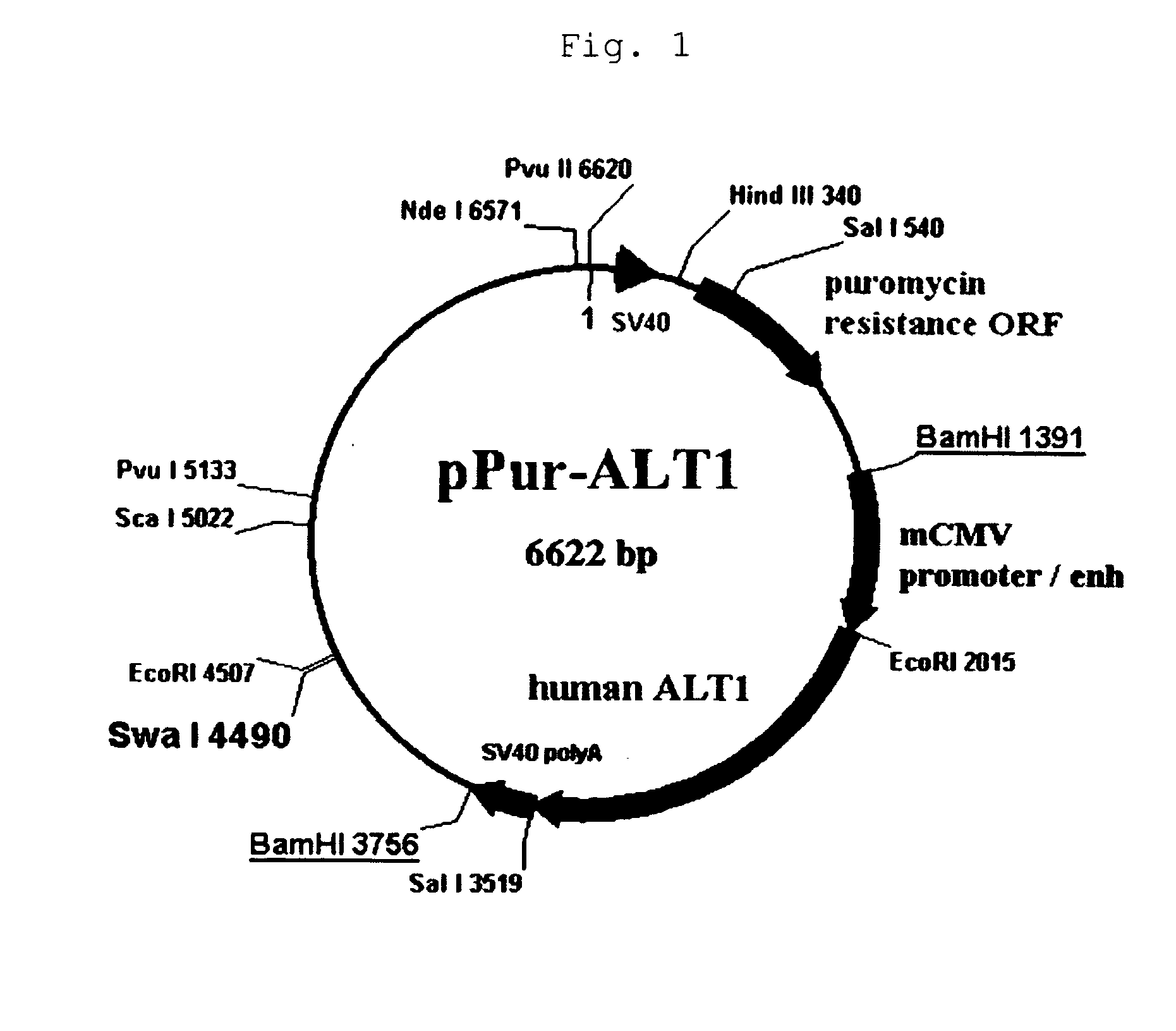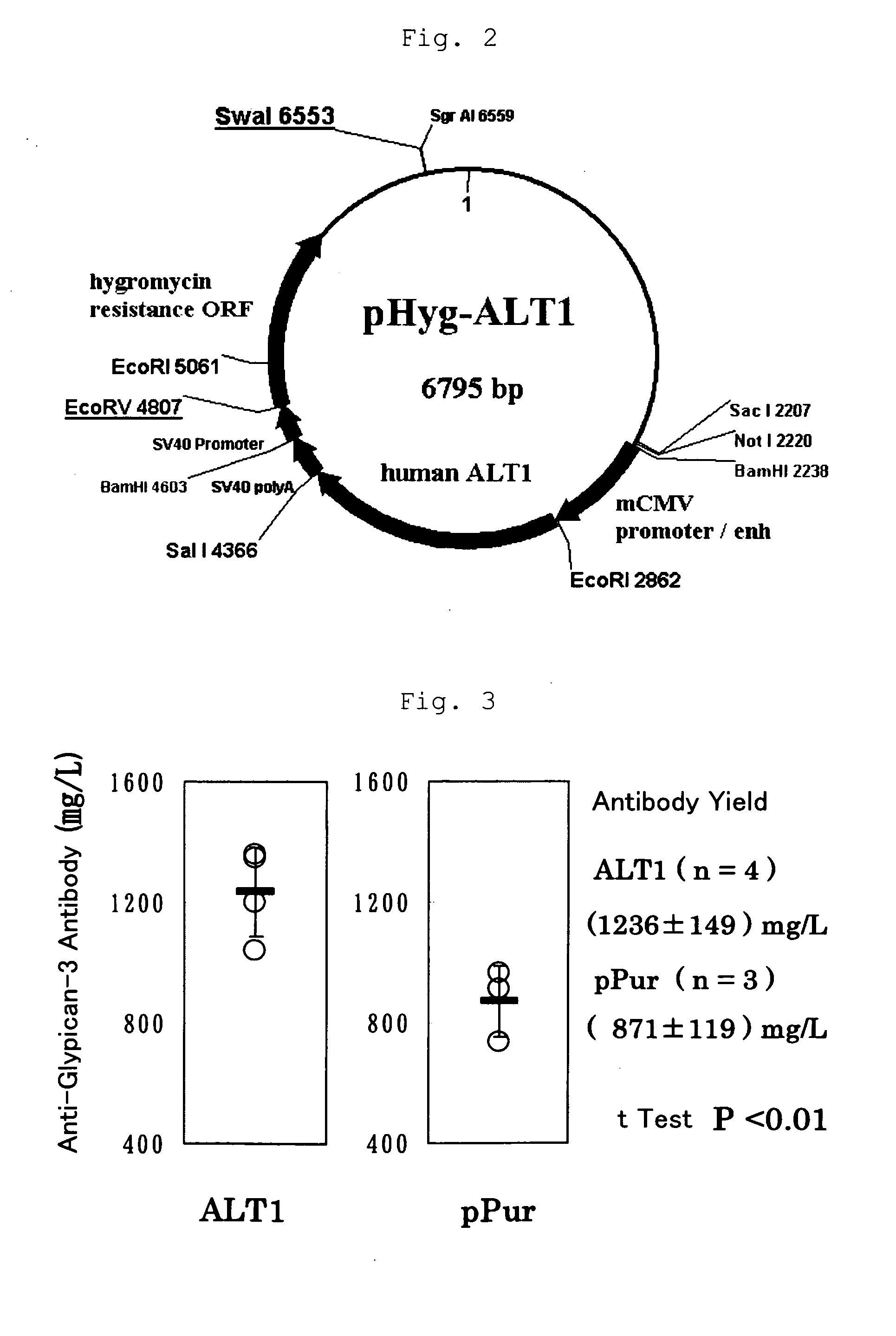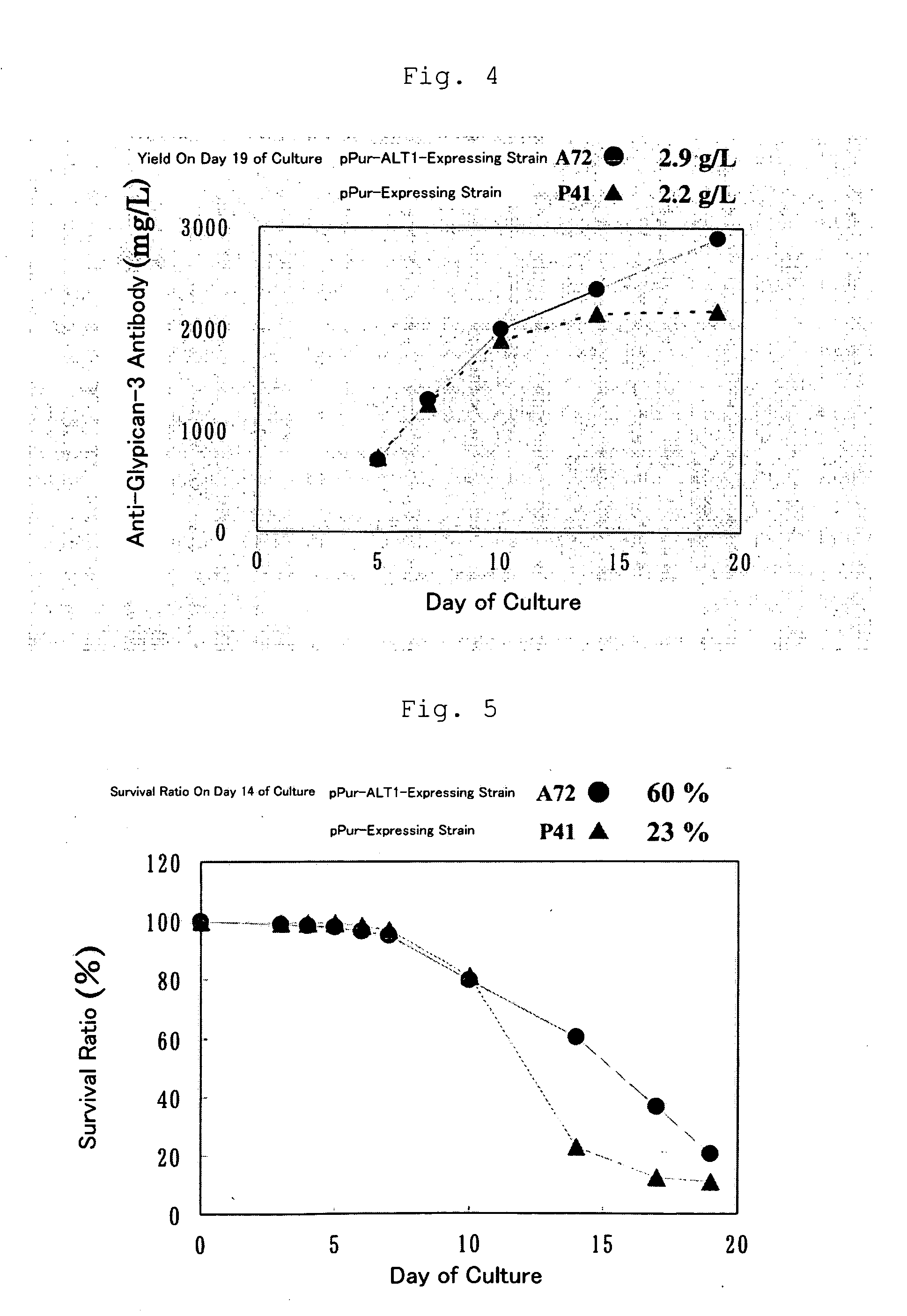Method of producing heterogeneous protein
a technology of heterogeneous protein and production method, which is applied in the direction of peptide sources, bulk chemical production, transferases, etc., can solve the problems of not knowing the host cells, and achieve the effect of increasing the yield of the desired polypeptid
- Summary
- Abstract
- Description
- Claims
- Application Information
AI Technical Summary
Benefits of technology
Problems solved by technology
Method used
Image
Examples
example 1
Cloning of Human Hepatic Cell Alanine Aminotransferase Gene
[0173]Using a commercial Human Liver QUICK-Clone cDNA (Clontech Laboratories, Inc.) as a template, alanine aminotransferase (ALT1) gene derived from a human liver was obtained by a PCR method. The gene thus cloned was sequenced and confirmed to encode ALT 1 based on its homology with published human ALT 1. The ALT 1 gene thus obtained had mutations at five sites in the sequence of 1488 bases (c157a, a215g, c765t, t857c, t995a) and coded for 496 amino acids including four different amino acids (R53S, Q72R, F286S, M332K), but this was used as a PCR clone of the human liver derived ALT1 for cell modulation.
example 2
Increase in Antibody Yield by Transfer of Human Alanine Aminotransferase
[0174]By adding a Kozak sequence to the human ALT1 obtained by cloning in Example 1 (which is hereinafter called ALT1), pPur-ALT1 (FIG. 1) and pHyg-ALT1 (FIG. 2), which were CMV promoter expression plasmids, were constructed. The pPur-ALT1 or pPur expression plasmids that did not contain the ALT1 gene were introduced into anti-glypican-3 antibody-producing CHO cells as parent strains (see International Publication WO 2006 / 006693) by electroporation, and cell strains that exhibited high proliferation in static culture in the presence of Puromycin (6 μg / ml) (pPur-ALT 1: seven strains, pPur: three strains) were selected. After expansion, a total RNA was prepared from the pPur-ALT 1 cell strains, and six strains expressing human ALT1 at high levels were selected by a TaqMan method. Further, a comparison was made for the antibody yield between pPur-transferred cells as a control (three strains) and four strains of hu...
referential example 1
Cloning of CHO Cell-Derived Hamster Taurine Transporter Gene
[0180]Total RNA was extracted from anti-IL-6 receptor antibody-producing cells (A CHO DXB11 cell line into which an anti-IL-6 receptor antibody gene had been transferred) (Japanese Unexamined Patent Publication No. Hei 8-99902), and then cDNA was synthesized therefrom in a poly(A) dependent manner. Hamster taurine transporter (TauT) gene was obtained by PCR using as a template the cDNA fragmented with three restriction enzymes, SalI, XhoI and EcoRI. As PCR primers, those containing the 5′-end and the 3′-end sequence conserved between rat and mouse TauTs were designed. The nucleotide sequence of the cloned gene was determined. From its homology with other TauT genes of known species, the cloned gene was confirmed to encode hamster TauT (FIG. 8). The amino acid sequence of hamster TauT has high homology with mouse TauT (96% identity), rat TauT (96% identity) and human TauT (93% identity); it was predicted that hamster TauT is...
PUM
| Property | Measurement | Unit |
|---|---|---|
| concentration | aaaaa | aaaaa |
| concentration | aaaaa | aaaaa |
| concentration | aaaaa | aaaaa |
Abstract
Description
Claims
Application Information
 Login to View More
Login to View More - R&D
- Intellectual Property
- Life Sciences
- Materials
- Tech Scout
- Unparalleled Data Quality
- Higher Quality Content
- 60% Fewer Hallucinations
Browse by: Latest US Patents, China's latest patents, Technical Efficacy Thesaurus, Application Domain, Technology Topic, Popular Technical Reports.
© 2025 PatSnap. All rights reserved.Legal|Privacy policy|Modern Slavery Act Transparency Statement|Sitemap|About US| Contact US: help@patsnap.com



